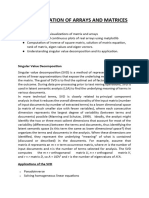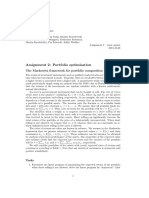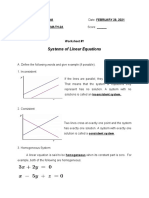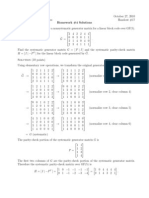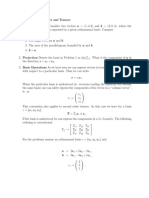0% found this document useful (0 votes)
22 views2 pagesRajakumaran Maths Python Assignment
This document contains a Python assignment for a mathematics course, focusing on various linear algebra concepts. It includes code snippets for checking linear independence, spanning R³, reduced row echelon form, angles between vectors, orthonormal basis using Gram-Schmidt, linear transformations, singular value decomposition, diagonalization, solving systems using Gaussian elimination, and finding inverses using Gauss-Jordan. Each section provides a brief explanation and corresponding Python code to demonstrate the concepts.
Uploaded by
Rajendran S.P PerumalCopyright
© © All Rights Reserved
We take content rights seriously. If you suspect this is your content, claim it here.
Available Formats
Download as TXT, PDF, TXT or read online on Scribd
0% found this document useful (0 votes)
22 views2 pagesRajakumaran Maths Python Assignment
This document contains a Python assignment for a mathematics course, focusing on various linear algebra concepts. It includes code snippets for checking linear independence, spanning R³, reduced row echelon form, angles between vectors, orthonormal basis using Gram-Schmidt, linear transformations, singular value decomposition, diagonalization, solving systems using Gaussian elimination, and finding inverses using Gauss-Jordan. Each section provides a brief explanation and corresponding Python code to demonstrate the concepts.
Uploaded by
Rajendran S.P PerumalCopyright
© © All Rights Reserved
We take content rights seriously. If you suspect this is your content, claim it here.
Available Formats
Download as TXT, PDF, TXT or read online on Scribd
/ 2











